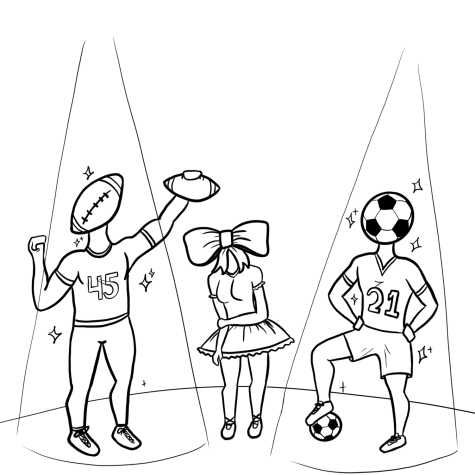
Growing up as a dancer, I have consistently dreaded being asked the question, “What sport do you play?” I don’t dread it because I am embarrassed of being a dancer, but because when I tell people I dance, I am met with comments such as, “That’s not a sport,” or “Play a real sport instead.” Dancers have faced stigma for years, in stereotypes that all dancers are pretentious, to beliefs that dance is not physically challenging. Yet, according to the Oxford Dictionary, a sport is “an activity involving physical exertion and skill in which an individual or team competes against another or others for entertainment.” Dance fits this criteria and thus deserves to be recognized with the same respect as other sports.
Many believe that dance is not as demanding and requires less training compared to sports such as football. However, dancers train just as hard as football players do, but in different ways. According to 4Dancers, an organization that informs people about the latest news within the dance world, many professional dancers put in six to nine hours a day, five to six days a week and an average of 45 weeks in a year. In fact, compared to a National Football League (NFL) player, dancers typically train more. According to DNA of Sports, a sports networking organization, professional football players train for only four to five hours a day and four days a week.
Many dancers have intense commitment to perform at a professional level, dedicating years of hard work, vigorous training and motivation to the sport. Moreover, most dancers compete with their teams, another criterion of sports, and spend hours practicing for these competitions. According to Miller’s Dance Studio, a dance company that has highly ranked teams, competitive dancers practice in their studio for 15-25 hours a week.
Dance’s stereotypes may also be due to its poor reputation in the media. Many shows, such as “Dance Moms” or “Tiny Pretty Things” portray dancers in a negative light, implying that all dancers care about is winning or badmouthing their teammates – which is far from the truth. According to an article by the New York Times, promoting this false perception about dance in the media contributes to dance being taken less seriously by enforcing inaccurate stereotypes. “In cinema, ballet has long served as fodder for settings of horror and brutality. It makes sense: Careers are short, and there is always another dancer waiting in the wings with better feet, a higher jump and — that undeniable thing — youth. But dance is also a way to show emotions and the inner mind without words; a body can lose control. It can appear to be human and transform into something else: eerie, tormented, exaggerated. It can house horror.”
Additionally, dance faces a lack of representation in our community. At Redwood, there are many students who dance at a studio, competitively or recreationally, outside of school. At schools such as Marin Academy and Novato High School, there are dance programs and teams that many students are a part of. However, at Redwood, there is currently no option to dance at school, whether that would be a team, an elective or a club. The lack of a dance program at Redwood goes to show how dancers are not taken seriously, since there is no availability to practice the sport in a school setting. Many of my studio teammates have chosen to go to a high school other than Redwood so that they can dance for their schools.
Many believe that dance is only considered to be an expression of art, and that it is not as intense as a sport. While it is true that dance is an art form, it is actually just as, if not more, physically exertive as many other sports. If dance can match the levels of criteria to be a sport, then it should be treated with the same respect as one.













